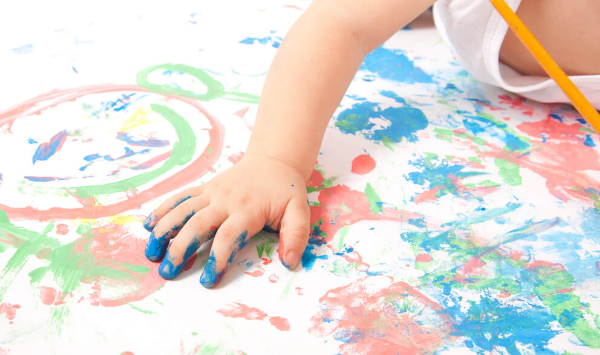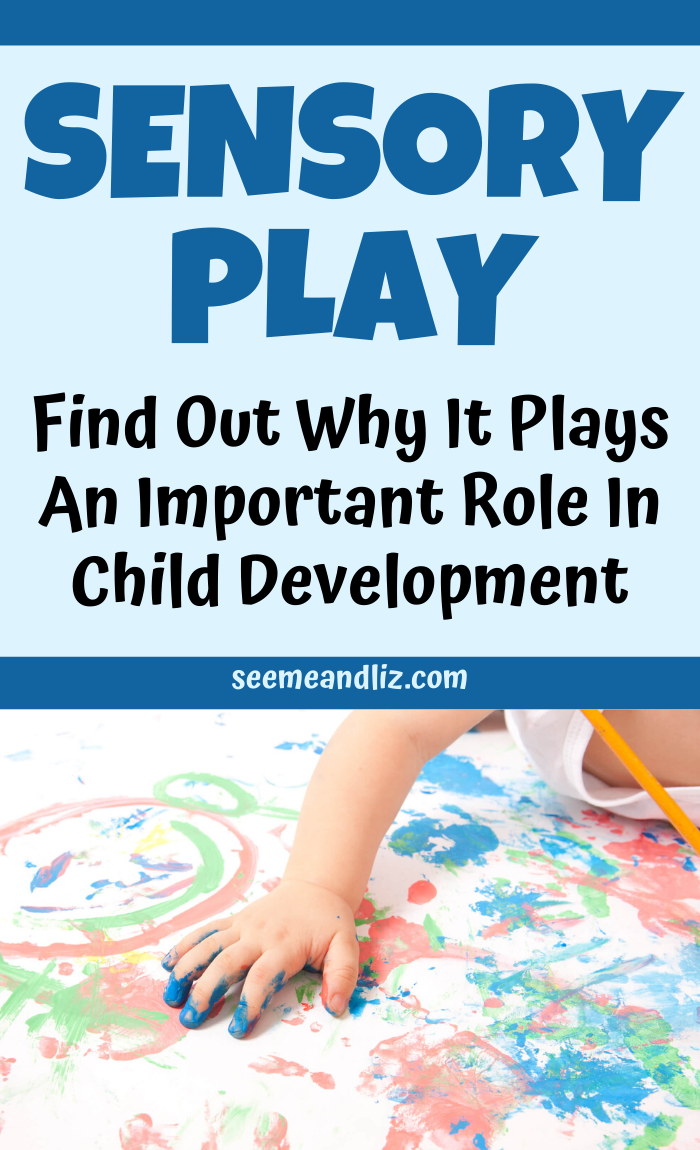 You may be familiar with a few of the old standbys when it comes to playing with a young child.
You may be familiar with a few of the old standbys when it comes to playing with a young child.
There’s peek-a-boo, nursery rhymes, and tickling toes. But when those grow old what can you do?
One option is to offer some sensory play alternatives.
Just as the name suggests, sensory play helps develop a child’s senses.
These hands-on activities can be started at a young age and have been proven to help in their overall development.
Also, they aren’t limited to just the five senses of sight, smell, sound, touch, hearing, as they can also help develop a child’s coordination as well.
Plus, what kid doesn’t want to get messy and explore new sights, sounds and feelings?
And the great news is you can get started with sensory play using items already in your house or even backyard!
6 Amazing Benefits of Sensory Play For Children
1. Cognitive Development
Babies learn about the world through their senses.
That’s why you see so many babies stick things in their mouth!
Sensory play helps develop those senses even more by introducing new textures, tastes, sounds, and smells.
As they interact with something new, their brain makes connections that weren’t there before.
These connections continue to be made as new cause-and-effect realizations are made through play.
2. Speech-Language Development
How do you develop language skills in a child that isn’t talking yet?
By talking to them as much as possible.
Sensory play helps with this because you can verbally explain to them what it is they are feeling or seeing.
You can use descriptive words such as “wet, dry, soft, hard, sharp, pointy, bumpy, smooth, etc.” to help them understand the new sensations they are experiencing.
Take a simple activity like a stroll to the park as an opportunity for some sensory play.
Have your child touch the bark on the tree and explain the rough texture to them.
Then have them feel the texture of a leaf to understand the difference between the two textures.
Verbalize everything to them and they will start to make the connections of what the feel and what they hear.
3. Fine Motor Skills
Sensory play can help develop a child’s fine motor skills, which will set them up for success in the future.
Squishing playdough or sliding cheerios onto a piece of pasta gives them muscle memory and allows them to develop dexterity skills.
These skills lead to future successes like mastering the pincer grasp in order to hold a pencil properly.
Activities you can try that will help them grow fine motor skills include zipping or tying things, as well as snapping and sorting items.
A sensory bin filled with a variety of small items of different shapes and sizes is a perfect place to start developing fine motor skills.
Sorting all the blue items into one cup while the green items go in another is an easy exercise to reinforce this skill.
Keep the age of your child in mind when setting up some of these activities as it wouldn’t be appropriate to provide such a bin to a child under 3 without very close supervision.
4. Calming
If you’ve ever been at a loss as to how to calm down a child in the middle of a meltdown, try a sensory activity.
Some children see a calming benefit from sensory play.
Grab some pots and pans and a wooden spatula and let them bang away their frustrations.
You can also try blowing feathers off your hand in to the air and watch them fall to the ground.
Sensory play is also something you can try right before bedtime to help them wind down from the day.
5. Social Interaction
When children participate in sensory activities with other kids, they learn how to work together to solve problems and tasks.
They also learn by watching and mimicking each other as they manipulate the materials or complete a challenge.
They see another child has found success by doing something a certain way and they take on the challenge of trying to replicate this method to achieve the same result.
6. Comfort
Everything a baby experiences is brand new to them and can be scary initially.
Take for instance a child who dislikes eating wet food like pasta or applesauce.
To them, that texture is something that may be unpleasant and even scary.
However, sensory play can help reintroduce those textures in a safe and playful environment.
The more they are exposed to these situations in a comforting environment, the more likely they are to grow comfortable with them and give things another shot.
Final Thoughts
As you can see, the benefits sensory play brings to a developing child are great.
You can introduce this type of play to your child as soon as you like as long as you closely supervise them to ensure that they don’t accidentally eat something they shouldn’t.
Furthermore, since many of these activities only require materials you already have on hand, you can start today and watch as your little one explores their new world.
Don’t worry about creating elaborate sensory bins filled with rainbow colored pasta or rice (as you may have seen on Pinterest).
Instead, boil some cheap pasta, once cooked throw it into a big plastic bin, add some cups, spoons and even a digger or 2 and watch while your child giggle with joy!
Or go outside and make some good ol’ fashioned mud pies – with leaves, grass, sticks and all!
Author’s Biography
Jenn Sanders works for Baltic Wonder, a business dedicated to the health and well-being of infants. In her downtime, she enjoys outdoor excursions and spending time with her family.






